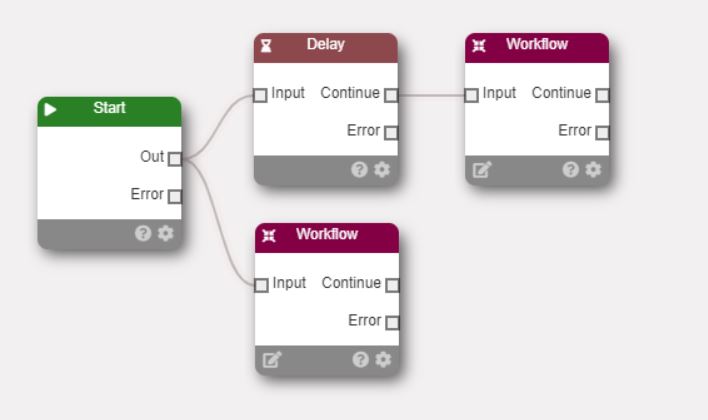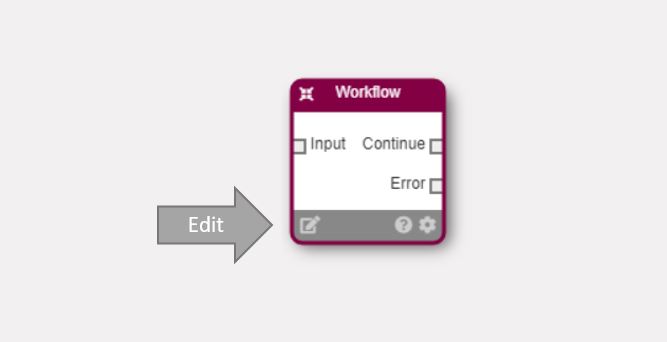Workflow
Overview
A workflow can call another workflow by using the workflow node. These ‘child’ workflows are completly independent of the parent workflow and no information (including the filename variable) is passed between workflows. Embedded a workflow is really just another way to trigger the execution of the workflow.

Using the workflow node in a ‘parent’ workflow creates a chain of workflows.
Usage
Adding workflows to other workflow is very easy: - Start with a normal workflow in the workflow design. We call this the parent workflow. - In the workflow desigmer open the Nodes menu and select ‘Workflow’. - Select a ‘child’ workflow that you wish to add to the parent workflow. - Connect the new child workflow node as you would any other workflow node.
Editing a child workflow
Each child workflow node has an ‘Edit’ button. The edit button is located in the bottom left of the node.

Clicking this button will open child workflow in a separate browser tab allow you to make changes to the workflow. Remeber to save any changes that you make.
It is important to remember that adding a child workflow to a parent really just makes a reference to the child workflow. If, for example, you have several parent workflows using the same child workflow; if you make a change to the child workflow then all parent workflows will be affected.
Logging in child workflows
Any logging telemetry that a child workflow produces will be stored with the child workflow. You will see, in the parent workflow telemetry, that a child workflow was started, but the detail will be in the child workflow logs.
Detecting errors in a child workflow
The parent workflow is unable to determine if a child workflow completed successfully. This is why a workflow node has no error output.
